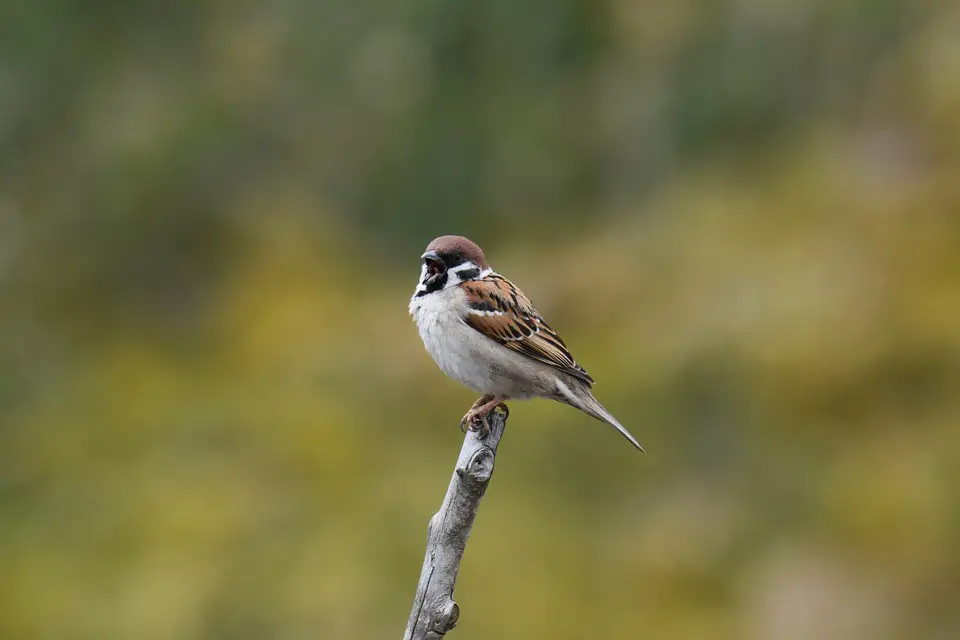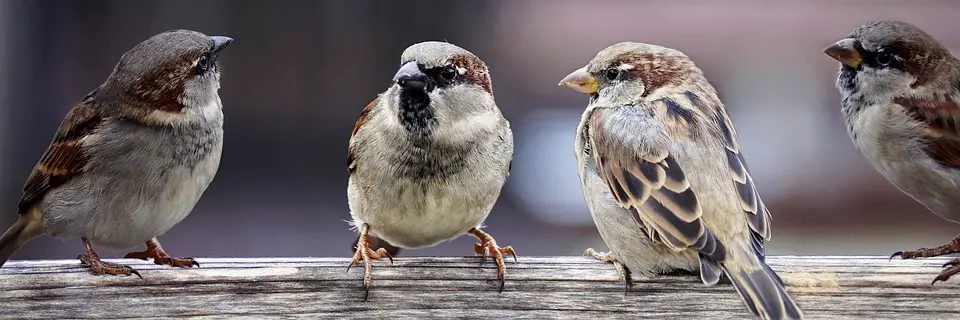People of a certain age might have fond memories of their garden teeming with sparrows and the air filled with their pretty chirruping. You might even remember the gregarious little fellows in a parent or grandparent’s garden. They used to be so plentiful.
Their numbers have declined incredibly over recent years, if, like me, you would like to know how to attract sparrows to your garden, read on. With a little time and effort, it is possible to get sparrows and their lovely song back at your feeders.
As with most garden birds they way to entice them closer is with food and drink, somewhere to shelter, and somewhere to sleep. Gardens with seed feeders, shrubbery, and birdbaths stand a good chance of sparrows paying a visit. Installing nesting boxes in the eaves of a house and you can almost guarantee sparrow guests.

Table of Contents
What food do sparrows like?
House sparrows are generally ‘granivorous’, meaning they prefer to eat seeds and grain. Their beaks are specifically adapted with this in mind, they are deep and conical.
They will eat almost any bird seed that you hang out but have a particular fondness for red millet which is packed full of vitamins and minerals. Hang it in tubes quite near to the house, they should visit in their droves once they have discovered it. They don’t mind feeding on flat areas or the floor either, I often catch them amongst my strawberries or pinching the mealworms I leave out for my blackbirds. They seem to have a fondness for crushed peanuts and will peck at the home-made suet cake.
They have amazing foraging capabilities and a sparrow will eat most kitchen scraps if they’re hungry enough.
They are comfortable amongst humans but quite aggressive to fellow birds. They dominate the feeders and try to frighten other species away. For this reason, I recommend feeding the sparrows separately, closer to the house. Hopefully, then, the other birds can feed freely elsewhere in the garden.
We have a detailed article on food that sparrows like here.
Bath-time
In mid-summer, the sparrow enjoys nothing more than taking a bath to try and cool off. As they live in large communities, they often bathe that way too. If your garden has a large birdbath you can expect to see groups of sparrows splashing together.
If there is no water available the sparrow will take a dust bath instead. They look for areas of fine, sandy soil and flick this over their puffed up feathers. This not only cleans them and cools them down but it also rids them of parasites.
Sparrows drink lots too, ensure there is a water source close to their food and keep it topped up with clean, freshwater.
Gardener, Alan Titchmarsh says ” birds linger longer in a garden where they can drink and bathe”
Nesting
House sparrows are called that for a reason; they make their nests close to or attached to our homes. They nest high in the eaves of houses if it is possible, or utilise nooks and crannies in the framework of the house.
They live in close communities so instead of putting 1 nesting box in a secure position on the side of the house, consider putting multiple ones. You are more likely to attract lots of sparrows to nest and raise their young.
Ensure the boxes have holes of at least 1.5” and are in a sheltered area, out of direct sunlight and high winds.
If you have recently had a swallow vacate a nest, the sparrow will happily move in and treat it as their own. They have even been known to bully other small birds out of their nests and move in.

Security
Sparrows like to hide and build their nests in dense shrubbery. Gardens with lots of high growth and thick bushes appeal to the sparrow, they can build their nest safely inside away from most predators.
Their nests are quite scruffy affairs made mostly from grass and straw. They line the nests with softer things such as wool and hair, they might even use man-made fabrics if they are available.
To entice them to your garden consider placing bits of wool or the contents of the brush after you’ve brushed your pets, into the shrubbery. If they have a place to nest and materials with which to construct it, you might get visitors in no time.
Final thoughts…
Whether you miss our industrious feathered friend the sparrow or want to help halt their decline, our useful tips of how to attract sparrows to your garden should help.
I love the thought that we’re giving them as much help to survive while providing us with some beautiful songs as they do.
